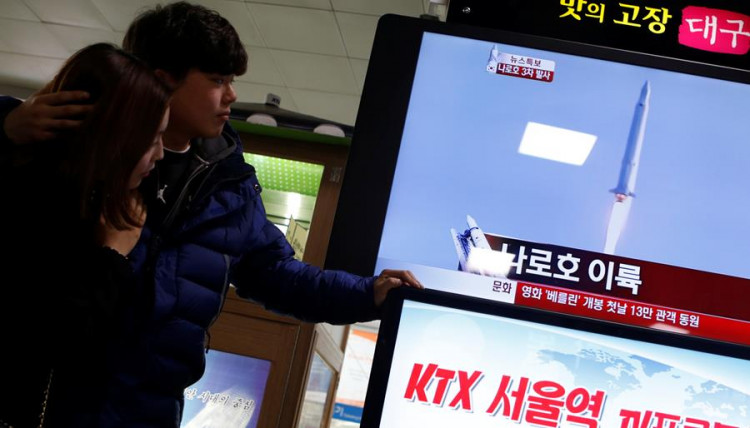As reported by North Korea's official news agency, a missile fired into the sea east of the Korean Peninsula was a hypersonic weapon.
It is the country's second such test of a hypersonic gliding missile to date, as it seeks new defense capabilities in the aftermath of stalled denuclearization talks, state news agency KCNA reported Thursday.
North Korean leader Kim Jong Un, according to the report, did not attend the launch.
According to KCNA, the missile carried a "hypersonic glide warhead" that struck a target 700 kilometers away with pinpoint accuracy.
Wednesday's launch was North Korea's first since October and was detected by many militaries in the region, sparking condemnation from the United States, South Korea and Japan.
North Korea conducted its first hypersonic missile test in September, entering a race to deploy the advanced weapons system led by major military forces.
South Korea's National Security Council voiced concern about North Korea's missile launch Wednesday and asked for the restart of discussion with its neighbor in order to de-escalate tensions in inter-Korean relations, according to the South Korean presidential office.
The United Nations Security Council has passed resolutions prohibiting North Korea from conducting ballistic missile and nuclear tests, and sanctions have been placed in response to the programs.
Hypersonic missiles may travel at speeds of up to five times the speed of sound (about 6,200 kilometers per hour) and are more maneuverable compared to conventional weapons.
Unlike ballistic missiles, which enter space and then return on steep courses to their targets, hypersonic weapons fly at low elevations and can be controlled to make them more difficult to destroy.
"Successful test launches in the hypersonic missile sector have strategic significance in that they accelerate the process of modernizing the state's strategic military forces," the KCNA report stated.
The development of more maneuverable missiles and warheads is almost certainly intended at defeating South Korea's and the United States' missile defense systems. The U.S. is now investing billions of dollars in missile defense upgrades.
The U.S. State Department said Wednesday that this week's launch violated multiple United Nations Security Council Resolutions and posed a threat to North Korea's neighbors and the international community.
The latest test occurred just hours before South Korean President Moon Jae-in attended a groundbreaking ceremony for a train project that he hopes will eventually link the divided Korean peninsula.






